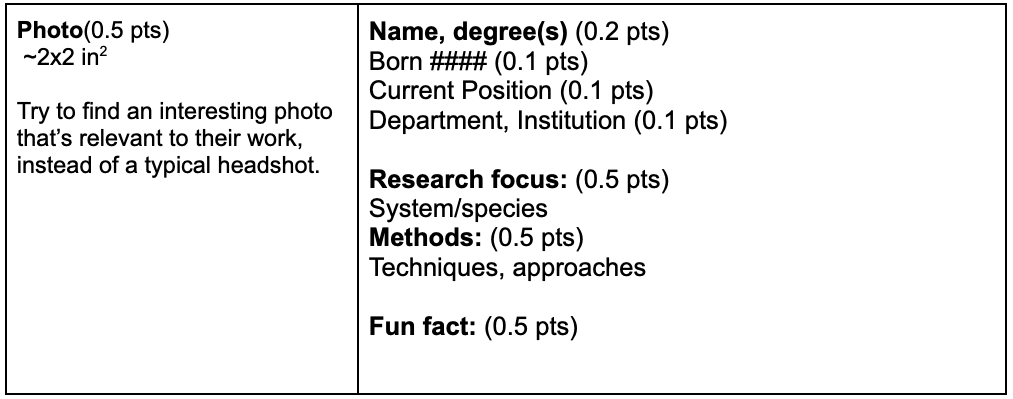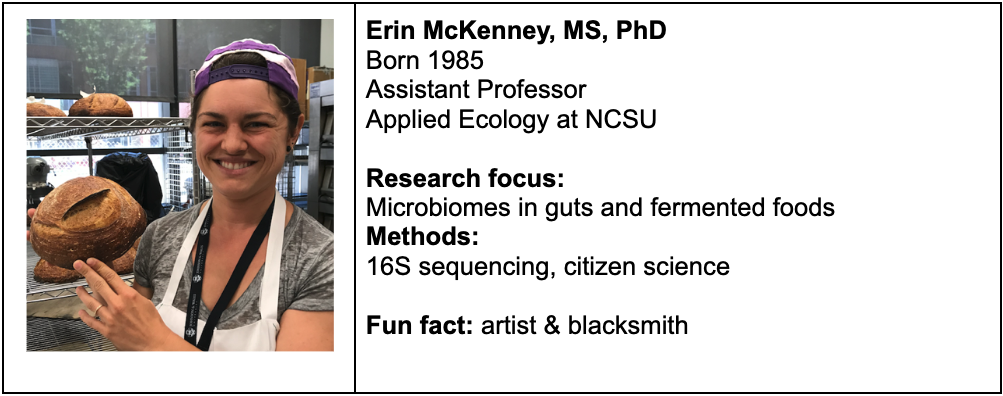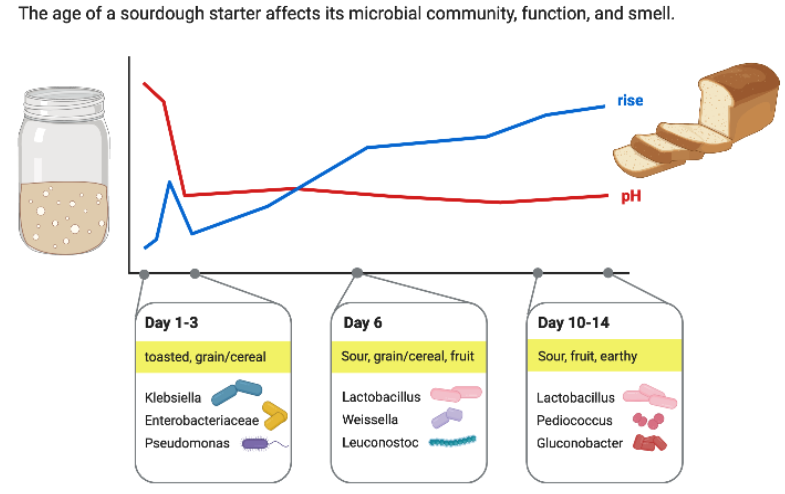Resources for Educators – Featured Ecologist assignment
About the Assignment
While Ecology, Evolution, and Conservation Biology (EECB) disciplines emphasize the importance of biodiversity for ecosystem function and resilience, these fields have historically excluded scientists who identify as Black, Indigenous, and People of Color (BIPOC), women, LGBTQ+, and other marginalized demographics. “What does a scientist look like?” and other projects and initiatives have highlighted the importance of making diversity in STEM visible, in order to recruit and retain diverse scientists. Here, I wanted to give students a chance to
- highlight the diverse scientists they (as students) want to see in their textbook; and
- discover and celebrate ecologists with whom they share identities and research interests.
Template

(3 pts) Summarize the ecologist’s research in ~200 words. What questions they ask, and what systems they use/study to address those questions. What ecological concepts do they explore / invoke, that we have studied in class? What are their major findings? What are the implications and importance? Is there anything else about their career that you would like to feature?
(4 pts) Create a BioRender figure that conveys key findings from the ecologist’s research. The final product should clearly illustrate (an example of) their contributions to the field. Make sure that your ideas are clearly presented: your figure should be well organized and aesthetically pleasing, and all text should be legible.
BioRender figure credit: Your Name
[Insert page break after your entry, so that each Feature Ecologist begins on a new page.]
Need inspiration?
Here are a few under-represented ecologists to help get you started. (If you choose one of them, please remove their name from this list to avoid repeats.)
- Hannah Croasdale
- Greg Florant
- Noah Whitman
- Carlos Martinez del Rio
Example

Dr. McKenney studies gut microbes in primates and carnivores. She is particularly interested in the succession process and community dynamics, and has studied both captive and wild populations to investigate the effects of diet versus age, health status, and environment (including anthropogenic pressures) on community composition. More recently, Dr. McKenney has broadened her research to fermented foods (including sourdough starters). Fermented foods contain simpler microbial systems than guts, and provide a safe way to engage the public in microbiology, making them ideal for large-scale citizen science. Her findings have implications for management strategies, and also inform our understanding of ecological theory. For example – Erin has found that microbial communities follow predictable and similar patterns of succession. Whether they grow in guts or jars, generalist pioneer species are outcompeted over time as specific pressures (i.e. fiber or pH) select for more specialized taxa, shaping consistent climax communities. Erin values diversity in human as well as microbial cultures: as a teaching faculty at NCSU, she is actively involved in the University’s LGBTQ+ Advocate program and serves on her department’s Diversity, Equity, and Inclusion committee.

BioRender figure credit: Erin McKenney

